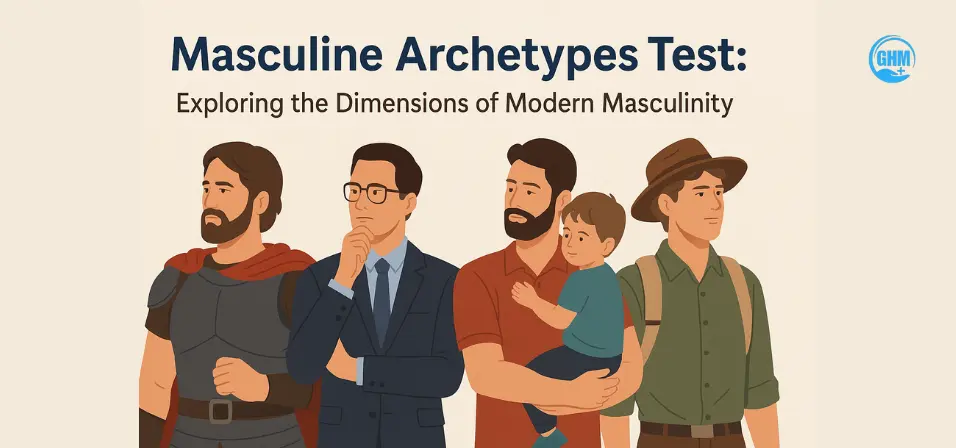Masculine Archetypes Test: Exploring the Dimensions of Modern Masculinity
Introduction
Masculinity is no longer defined by one rigid mold. As societal norms evolve, so does our understanding of what it means to be a man. The Masculine Archetypes Test is a valuable self-discovery tool that explores the various aspects of masculinity. By identifying core personality archetypes rooted in ancient myth and modern psychology, the test offers insight into character, strengths, and opportunities for personal growth.
Table of Contents
- What Are Masculine Archetypes?
- Why Archetypes Matter
- The 4 Core Masculine Archetypes
- Taking the Masculine Archetypes Test
- How to Apply the Results
- The Changing Face of Masculinity
- Conclusion
- FAQs
What Are Masculine Archetypes?
Masculine archetypes represent recurring personality patterns or behavioral tendencies traditionally associated with masculinity. These archetypes have roots in mythology, storytelling, and psychology and provide a framework to better understand how men express themselves emotionally, mentally, and socially.
Rather than categorizing men as “strong” or “sensitive,” archetypes offer a deeper, multidimensional look at masculine identity.
Why Archetypes Matter
The use of archetypes helps reveal both conscious and unconscious traits. Originally popularized by Carl Jung, archetypes reflect deeply embedded psychological patterns present in all humans. In the context of masculinity, these archetypes provide:
- A map for self-awareness
- A tool for personal and relational growth
- A method to challenge outdated stereotypes
The 4 Core Masculine Archetypes
The Masculine Archetypes Test typically centers on four key personas: King, Warrior, Magician, and Lover. Each archetype embodies different strengths, emotions, and roles men may inhabit throughout their lives.
1. The King
The King symbolizes leadership, order, and responsibility. He governs with integrity, provides for others, and seeks harmony. Those who score high in the King archetype tend to:
- Exhibit strong leadership skills
- Provide stability and vision
- Inspire loyalty and respect
2. The Warrior
The Warrior archetype is defined by action, courage, and discipline. Warriors take decisive steps, fight for causes, and stand firm in the face of adversity. Common traits include:
- Focused determination
- High energy and commitment
- Mental and physical resilience
3. The Magician
The Magician stands for wisdom, insight, and transformation. This archetype represents those who thrive on learning and internal growth. Those with a dominant Magician trait often:
- Seek deeper understanding
- Are highly creative and strategic
- Possess intuitive and spiritual awareness
4. The Lover
The Lover archetype is emotionally rich, empathetic, and deeply connected to beauty and relationships. Lovers are driven by passion and express affection openly. Traits include:
- Emotional intelligence
- Deep interpersonal connections
- Appreciation for art, nature, and intimacy
Taking the Masculine Archetypes Test
The test typically involves a series of reflective questions assessing emotional responses, behavior, values, and relationships. It can be taken in three formats:
1. Self-Assessment
Answer questions based on your own observations and reflections. This is ideal for personal exploration.
2. Peer Review
Trusted friends, partners, or colleagues provide feedback to help identify your dominant traits more objectively.
3. Professional Analysis
Psychologists or life coaches may use structured tools or interviews for a deeper understanding and guidance.
How to Apply the Results
Understanding your archetype(s) is only the first step. The true value lies in how you apply that insight to improve your life.
Personal Growth
Knowing your strengths helps you set clearer goals and align your life with your values. If you identify as a Magician, focus on creative pursuits. If you’re a King, leadership roles may suit you best.
Relationship Building
Understanding both your own archetypes and those of your partner or peers can improve communication, empathy, and compatibility.
Career Alignment
Archetypes often correlate with career preferences. Warriors may excel in competitive roles; Magicians thrive in strategy or research; Lovers do well in caregiving or artistic fields.
Leadership and Community Impact
A King archetype can guide, organize, and inspire communities or organizations by using his innate leadership and wisdom.
The Changing Face of Masculinity
Breaking Stereotypes
Traditional masculinity often emphasized stoicism and dominance. While strength is still valued, today’s masculine expression includes vulnerability, emotional depth, and creativity.
Embracing Diverse Masculine Expressions
No two men are the same-and they don’t have to be. The Masculine Archetypes Test encourages men to honor who they are rather than fit into a single societal mold.
Conclusion
The Masculine Archetypes Test offers a transformative lens through which men can better understand their unique identity. By recognizing the traits of the King, Warrior, Magician, and Lover within themselves, individuals can:
- Enhance personal and professional growth
- Strengthen emotional intelligence
- Build healthier, more empathetic relationships
As we continue to redefine masculinity in a modern world, this test serves as both a compass and a conversation starter. It challenges outdated norms and celebrates the vast richness of masculine identity-inviting men to live more consciously, courageously, and authentically.
FAQs
What is the Masculine Archetypes Test?
It’s a psychological tool designed to help men identify their dominant personality archetypes-such as the King, Warrior, Magician, or Lover.
Who should take the test?
Any individual-especially men-interested in self-awareness, emotional growth, or understanding the complexity of masculine identity.
Is the test based on science?
Yes. The concept of archetypes comes from Carl Jung’s psychological theory of the collective unconscious. Many modern personality assessments are inspired by these foundations.
Can I have more than one dominant archetype?
Absolutely. Most people exhibit a blend of archetypes, though one or two may be more prominent depending on personality and life experiences.
How can this test improve relationships?
By recognizing your own and your partner’s archetypes, you can foster deeper communication, understanding, and emotional intimacy.
Also Read: Top Applications of AI in Healthcare You Should Know About



















